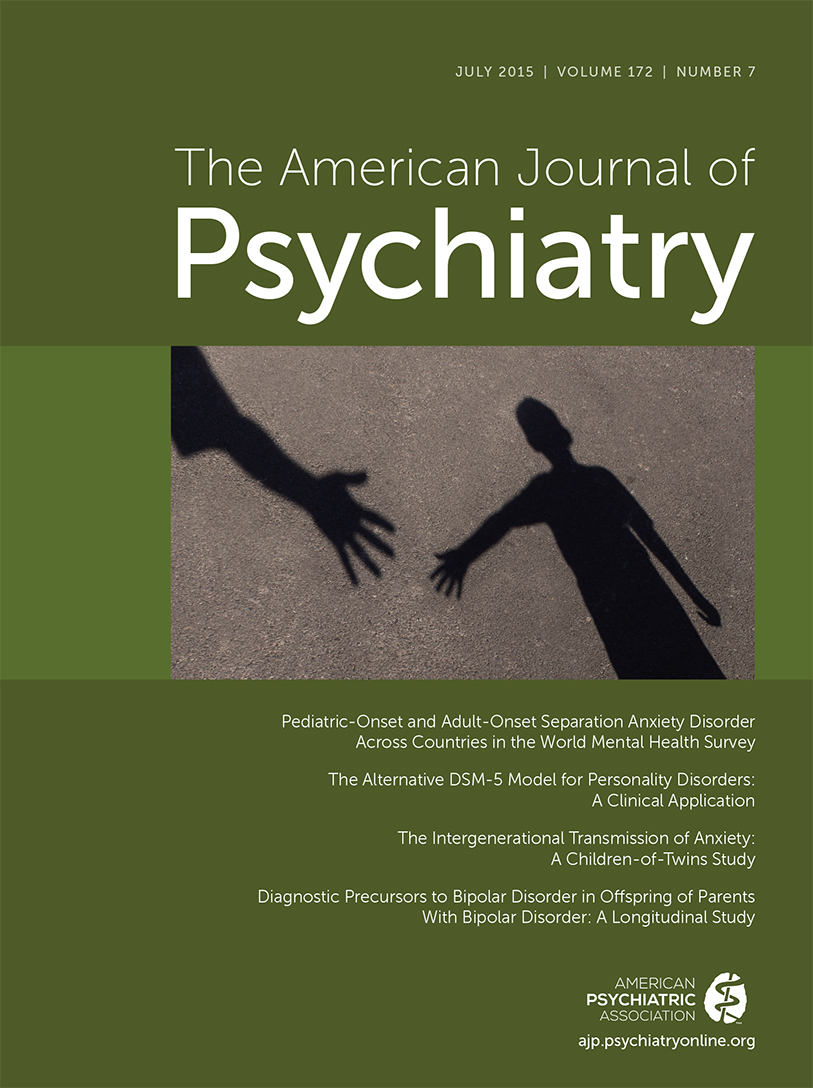The Intergenerational Transmission of Anxiety: A Children-of-Twins Study
Abstract
Objective:
The transmission of anxiety within families is well recognized, but the underlying processes are poorly understood. Twin studies of adolescent anxiety demonstrate both genetic and environmental influence, and multiple aspects of parenting are associated with offspring anxiety. To date, the children-of-twins design has not been used to evaluate the relative contributions of genetic transmission compared with direct transmission of anxiety from parents to their offspring.
Method:
Anxiety and neuroticism measures were completed by 385 monozygotic and 486 dizygotic same-sex twin families (37% male twin pair families) from the Twin and Offspring Study in Sweden. Structural equation models tested for the presence of both genetic and environmental transmission from one generation to the next.
Results:
For both anxiety and neuroticism, the models provide support for significant direct environmental transmission from parents to their adolescent offspring. In contrast, there was no evidence of significant genetic transmission.
Conclusions:
The association between parental and offspring anxiety largely arises because of a direct association between parents and their children independent of genetic confounds. The lack of genetic transmission may reflect there being different genetic effects on these traits in adolescence and adulthood. Direct environmental transmission is in line with developmental theories of anxiety suggesting that children and adolescents learn anxious behaviors from their parents through a number of pathways such as modeling. Future analyses should combine children-of-twins data with child twin data in order to examine whether this direct effect solely represents parental influences on the offspring or whether it also includes child/adolescent anxiety evoking parental anxiety.



